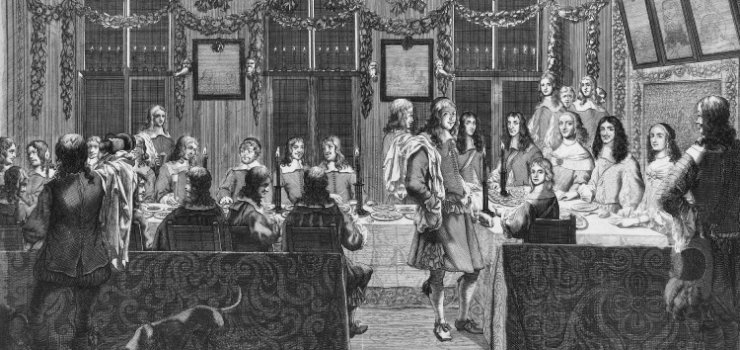
05
Oct
What Were Medieval Banquets Really Like?
Administrator
What Were Medieval Banquets Really Like?
Post by: Administrator05/10/2016
Have you ever wondered what it would have been like to be a guest at a medieval banquet? We have all heard tales of extravagant feasts with tables groaning under the weight of exotic and fabulous foods. But what was a medieval feast really like, and did they really just toss food over their shoulders when they had finished? Step back in time with Furniture Hire UK as we answer these questions and more.
A Feast Fit For A King Or Queen
Medieval banquets were usually held in the main hall where the household and their guests would gather together. There was a lot to be done before the feast, and often servants would rise in the early hours of the morning to begin the preparations. A lavish banquet would require a wide array of provisions that were acquired from local suppliers, and also exotic food sellers if the hosts really wanted to impress. It wasn't unusual to see a roasted peacock as a centrepiece on the table, or for the guests to be introduced to new spices that had just arrived from the Middle East or further afield.
The banqueting tables were often covered with a tablecloth, either plain or embroidered with the insignia or crest of the household. The name “buffet” actually originates from the banqueting hall. Buffets were stepped shelves that were used to hold the various dishes that made up the feast. The more shelves you had the better! These were often covered in rich velvet drapes.
No Expense Spared
No expense was spared where plates were concerned, and whilst most people ate with their fingers, or by stabbing knives into food on the table, they ate off of the finest silver or gold plates. Guests would tend to help themselves, but ate small portions in preparation for the dishes that would be brought out as the night progressed - it wasn’t uncommon for there to be six or seven courses at a banquet, and sometimes more!
Specialities included swans, peacocks and pheasants which for maximum effect would be adorned with feathers and sometimes even have their feet or beaks painted gold.
Once the lengthy meal was over the banqueting tables would be pulled back to make way for the entertainment. This was usually an essential element of every banquet, and would include a fine selection of entertainers including acrobats, singers, jugglers, magicians and actors. Many of these entertainers travelled from overseas just to play in a great hall belonging to royalty or the upper classes.
Oh, and we’re not sure that people did throw bones and other food over their shoulder when they were done, but they certainly did drop bones on the floor. These were often hoovered up by the resident dogs that were allowed to join in the festivities.
Honour Times Gone By With Your Own Medieval Banquet
With Christmas fast approaching, why not host your own Medieval banquet as part of your Christmas celebrations? It’s also a great theme for any wedding reception. We offer a wide range of furniture hire options including our banqueting tables. Available in round and rectangular designs, you can hire all the tables and chairs you need with confidence.
